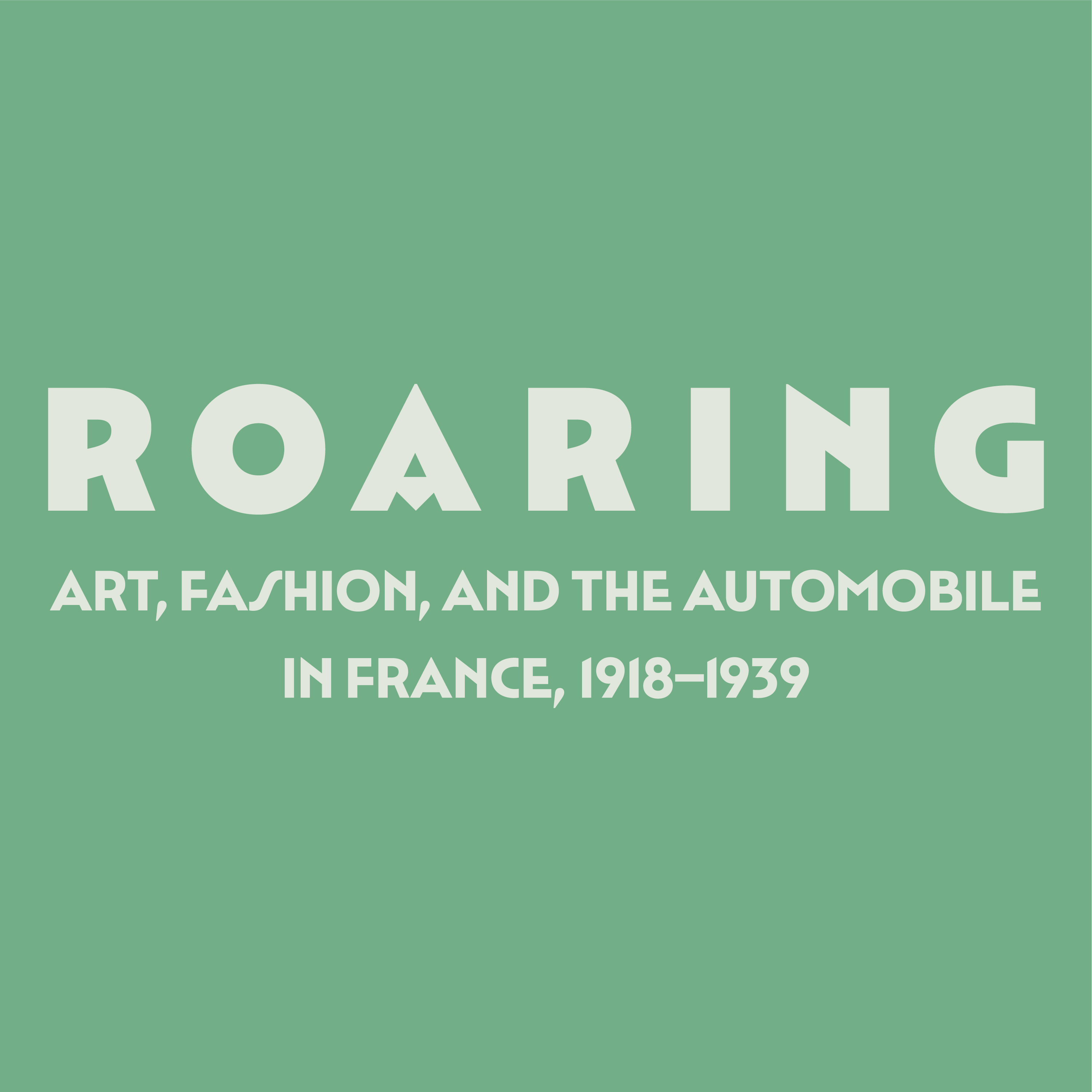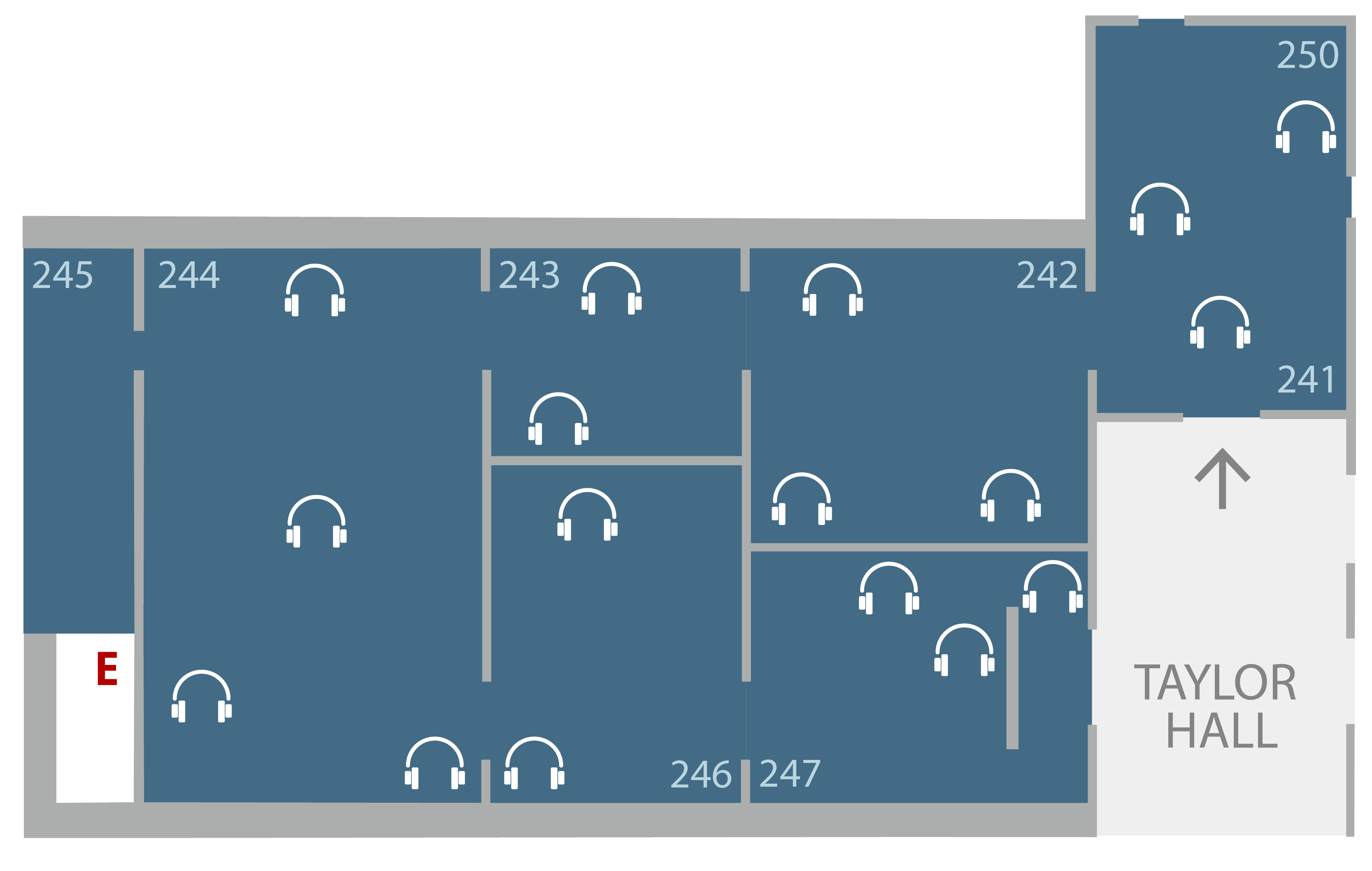designed by Giuseppe Figoni, French (born Italy), 1894–1978; made by Delahaye, Paris, active 1894–1954; leather interior by Hermès, French, founded 1837; Type 135MS Special Roadster, 1937; engine: six-cylinder in-line pushrod engine, two valves per cylinder, 3557 cc, 160 hp at 4200 rpm; wheelbase: 116 inches; Revs Institute, Inc., Naples, Florida; © 2024 Revs Institute, Photo: Peter Harholdt
Hear from a variety of experts about the transformative role of the automobile in pre–World War II France, highlighting innovations across art and industry by those who embraced it as a provocative expression of the modern age.
-
Access and Assistance
Free Public Wi-Fi
The Saint Louis Art Museum offers free Wi-Fi to visitors. From your device, access the SLAM_GUEST network.
Large Print Labels
Large-print labels are available on your own device and upon request at the Taylor Hall Welcome Desk.
AUDIO GUIDE TRANSCRIPT
The audio guide transcript is available to view on your own device.
-
Automobile Details
View the Automobile Details page to learn more about the 12 exemplary cars featured in this exhibition.

Introduction
- Transcript
Speakers
Min Jung Kim
The Barbara B. Taylor Director
Saint Louis Art Museum
Genevieve Cortinovis
Andrew W. Mellon Foundation Associate Curator of Decorative Arts and Design
Saint Louis Art Museum[Min Jung Kim]
Hello, I am Min Jung Kim, Barbara B. Taylor Director of the Saint Louis Art Museum.I am delighted to welcome you to the audio guide for Roaring: Art, Fashion, and the Automobile in France, 1918–1939. This exhibition explores the golden age of automobile design in France between the world wars—a period of remarkable creativity and innovation as well as social turbulence. Featuring 12 exemplary French cars alongside paintings, photographs, sculpture, furniture, fashion, and ephemera, Roaring spotlights the automobile’s transformative influence on modern life.
To tell you more, I’d like to introduce the exhibition’s curator, Genevieve Cortinovis, Andrew W. Mellon Foundation Associate Curator of Decorative Arts and Design.
[Genevieve Cortinovis]
Thank you, Min.Roaring takes us to France from 1918 to 1939—the interwar period. As creatives from across the globe flocked to Paris, the automobile became a provocative new expression of the modern age. Drivers and passengers gained access to the thrill of speed and the freedom of mobility. Magnificent coachbuilt auto bodies reflected the luxurious materials, avant-garde designs, and dazzling spectacles cultivated by French tastemakers and craftspeople. A car could be a work of art, a private sanctuary, a technological marvel, or a fashion accessory.
As you move through these galleries, consider how the French automotive industry has influenced and absorbed facets of art and design: from Cubist paintings to Art Deco furniture to Hermès handbags. Vital works from the Saint Louis Art Museum’s collection and from lenders in Europe and the United States converse with brilliantly conserved and restored period automobiles. Throughout, a rich assortment of fashions traces the diverse, evolving lifestyles of women in this automotive age.
This exhibition guide offers commentaries from several individuals. In addition to my voice, you will hear from other scholars and historians, including Ken Gross, the exhibition’s curator of automobiles. We encourage you to experience this guide in any order you like. You may follow it in numeric order or pick and choose. Each featured object can be located by following the floorplan on the webpage or by identifying the audio icon on the object’s label in the exhibition. Whether you’re listening from home or in the Museum’s galleries, I hope you enjoy this audio guide and your visit to Roaring: Art, Fashion, and the Automobile in France, 1918–1939.
- Gallery Text
Roaring: Art, Fashion, and the Automobile in France, 1918–1939
Punctuated by world wars, a global depression, and social upheaval, early 20th-century France attracted visionaries from across the globe with creative and economic opportunities. Fusing craft and technology, automobiles absorbed and transformed facets of modern art, design, fashion, and architecture.
After World War I (1914–18), cars, long the domain of engineers, met the minds and hands of France’s designers, artists, and craftspeople. Materials and techniques moved fluidly between sumptuous Art Deco interiors and luxury automobiles. Avant-garde showrooms, glittering displays, and thrilling races helped market the thousands of cars driving off assembly lines. Those same factories became centers of a labor movement that brought paid vacations and efficient automobiles to French workers.
In cars, artists discovered novel perspectives, subject matter, and even canvases. As driving became more comfortable, motoring fashions evolved into stylist wardrobe staples. Magazines portrayed liberated women dressed in knit sportswear driving convertibles. When fashions streamlined, so did cars. Embodying aerodynamics and natural forms, the sculptural curves of 1930s French coachbuilt automobiles are unrivaled today.
Featuring paintings, photographs, sculpture, furniture, films, fashion, textiles, and automobiles, Roaring illuminates the rich ecosystems that nourished this golden age of French automotive design. It highlights innovations across art and industry by those who embraced the automobile as a provocative expression of the modern age.
